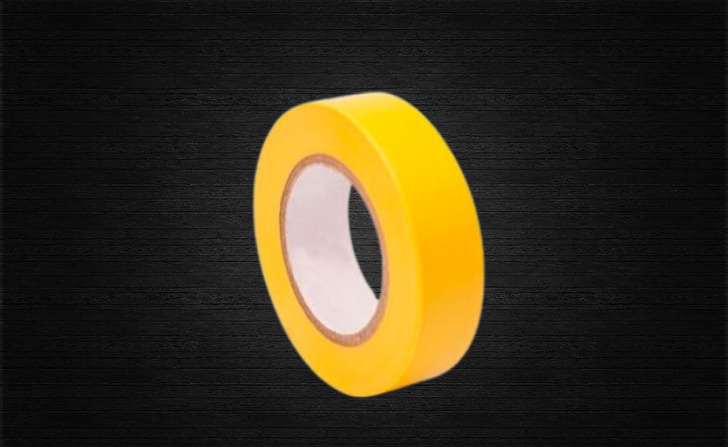Why is it so expensive and is there an alternative out there that won’t break so easily especially in the winter? My state is spending like a billion dollars a year on roads that they’ll probably have to fix in 5 years, it really seems like a huge waste of money.
Good Public transportation would fix a lot of these costs I know but what other road materials/solutions are out there?
Thank you for the answers and for putting up with my follow up questions. I’m learning a lot!
asphalt is cheap (and flashy) part of road construction, the really important, expensive, non-flashy and prone to corner cutting part is building solid, thick, high-quality layer of aggregate underneath. if you don’t have that, no matter how many layers of asphalt you slap on top it will break every winter
this is an instance of https://en.wikipedia.org/wiki/XY_problem
Roman roads exist over 2000 years later, and are still in use, because they made the foundations about 30m deep.
I’m not a road enthusiast but I want to point out that such large cobblestones with irregular surfaces and gaps in between may not be optimal for heavy trucks going across them at over 100 km/h.
They were smoother when they were maintained, several of them have been paved over with asphalt, and they hold up
Roman roads don’t see 80000Lb semi trucks rolling over them.
Metal roads. But since metal is expensive you probably want just two strips of it under the wheels. And since it will wear away at the rubber you probably would want the cars to have metal wheels as well. And at that point you could make the wheels form around the rails in order to make it easier to move fast without sliding. And then you could make the cars a lot bigger and link them together and have one big car push a whole bunch of them.
What great ideas! Have you been trained in city development?
But how will the BMW drivers pass?
they would get on this hyper-epic-420-linked-car and then get out at predefined location of public interest equally spaced out between a route
This reads in Adam Something’s voice
I was shooting for more of an Alan Fisher vibe but sure, that too.
Asphalt is pretty amazing given the amount of wear it goes through. It’s basically infinitely recyclable, very flexible, goes down fast, and is relatively easy to work with.
Not only infinitely recyclable, but like 99% recyclable right where it is located as well. You don’t need to ship in a bunch of material when the process is tearing up what is there, processing and adding a little more, then putting it right back down.
The actual material costs for roads are only a small portion of the cost.
By far the largest cost will be wages.
Resolving drainage and everything that goes under the road is more important than whatever you put on top.
Plus, asphalt is basically infinitely recyclable.
I hear people complain about prices of concrete but like you said it could be the wages. I just looked up concrete and it’s $5 for 80lbs. That doesn’t seem terribly expensive for 80lbs. How many bags do you think it would take to do an average driveway?
A pretty small driveway would be like 10 feet wide (enough for a Prius plus two feet of space on each side), 15 feet long (small yard with just enough room to park said Prius without sticking out), 4 inches deep. Quikrete has a “how many bags do you need for a 4in slab” calculator. Looks like for 80 pound bags you’re looking at 84 bags. If you can find them for $5 that puts the cost at $420, perfect for joking about over a joint after building the thing.
Just for fun, to make that driveway highway quality it would take about 3 times as much, so 252 bags and $1260.
Specifically talking about asphalt vs. concrete:
-
Asphalt is relatively cheap vs. concrete. This is partly because asphalt is a whole lot easier to recycle than concrete, which is almost un-recyclable, but also because asphalt is a relatively “simple” material - it’s mostly petroleum byproducts and gravel.
-
Concrete doesn’t grip very well, compared to the relatively textured surface of asphalt. Especially when wet! This is why you often see concrete formed with “ridges” or “bumps” cast into it. However…
-
This also makes concrete noisier and bumpier to drive over, making drivers less happy. It’s why it’s often used for short, low-speed uses like driveways, parking lots, or side streets.
Just about the only thing concrete has going for it is it’s endurance, which it definitely wins handily.
Every few years another engineered road solution is conceived - I’ve seen variations that would use glass which could be ‘re-fused’, concepts for recycling plastic waste, and many more. Most of these run into the issue that they’re either less ‘grippy’, or that they simply cost more even accounting for the longer lifespan.
Thanks, I had no idea asphalt was a byproduct of petroleum. Is concrete just rocks?
Not technical definitions:
Asphalt is for roads is small rocks held together by petroleum byproducts.
Concrete is small rocks held together by cement.
Concrete is gravel, sand, cement, lyme, and water, mixed in various ratios.
There’s a lot of variations and additives that can change how quickly it cures, often to speed it up or slow it down to account for weather (temperature and humidity play a huge part in how it cures), or to modify the pace of how it cures so you can keep building on it if you’re building vertically.
It’s a simple concept that gets incredibly complicated very quickly.
Big rocks, little rocks, cement, water.
Like the other comment says, concrete is rocks of various sizes (called “aggregate”) mixed with a cement and other additives to change its particular properties.
The cement is the really important point, because once water is added to the cement, it undergoes a chemical reaction which hardens it. Saying cement “dries” isn’t quite correct - yes, it stops being wet, but some of the water actually ends up incorporated into the molecules of the final cement. This is also why cement is really hard to recycle - you have to undo that chemical reaction, as opposed to asphalt which stays the same material.
Fun fact: When concrete is mixed at a big plant, it begins curing immediately. Concrete being carried in those big mixer trucks needs to be delivered before it cures in the truck!
As for city streets, wouldn’t concrete also be more dangerous for pedestrians? I can imagine that a fall on concrete is more likely to result in injury than on asphalt, with broken bones and skulls etc.
I’m not honestly sure. Asphalt (or, more properly, asphalt and gravel as a mixture, which is what is mostly used as a road surface) and concrete both are pretty ‘hard’ materials.
-
Asphalt with recycled plastic waste mixed in reportedly holds up stronger. But people are freaked out about microplastics so it probably won’t happen. The irony is that the majority of road microplastics actually come from tires.
My town did a bunch of side roads with that stuff and maybe they cut corners but all of the roads did horrible. It only took a year and they’re so messed up people wait in the long lines of traffic on the main roads to avoid them. In comparison the state roads were done at the same time and have been fine 5 years later. Obviously this is just one man’s limited view on this and there’s likely research that shows better results elsewhere.
There is no known viable replacement for asphalt. They all either lack certain features to make it viable in all conditions, or they are exponentially more expensive to produce in big quantities.
There are various green concrete versions, but none that caught up yet. I know the latest trend is mixing graphite into concrete as it has a lot of benefits, but I’m not sure how cost viable it is at scale.
deleted by creator
If you want to do some reading, google the Minnesota Department of Transportation - MnDOT - is known nationally and internationally for it’s testing of materials and construction of roads over a long term. There are some test sections dating back to 1973 that are still being monitored and studied. What make MnDOT studies valuable to other states, (and even other countries), is the wide temperature swings in the state. Temperatures can swing from -40F to over 100F in the course of one year.
A simplistic view - What damages road surfaces that happen over the winter and spring is the tiny cracks that are cause by the thermal expansion and contraction of the road surface that traps moisture which then repeatedly freezes and thaws. Freezing water expands creating a bit larger crack which traps more moisture - wash rinse and repeat over time and the surface flakes away causing potholes and broken roads. Add in the flexing of the road with heavy traffic, and roads will tend to break up and become rough. But there a a bunch of other considerations from subsurface prep to the general geology of where you want to build your road that all add to the life expectancy of the road itself.
Very generally, for heavy high speed traffic all weather roads, concrete roads seem to be gaining favor as the mixes get better additives.
Train tracks
I’m pretty sure per mile, train tracks are more expensive than asphalt roads. Even per passenger the cost savings are a bit questionable. A single urban rail line typically runs hundreds of millions to billions to construct, and more to operate.
Let’s be real, there are many advantages to mass transit, including safety, easing congestion and reducing emissions. But cost? No. Just no. If that were true, a capitalist system would have already capitalized on the opportunity
Train tracks are more expensive to build than roadways, yes, but they last many times longer and usually require less maintenance.
This is so wrong. Obviously depends on many factors, but on a per km basis rail is similar, if not slightly less than a lane of highway. In Australia this was estimated to be around $6.5million per km for either.
Hong Kong and Japan are both infamously capitalistic societies, and have capitalized heavily on rail.
Figures don’t add up when it comes to rail versus road - https://www.smh.com.au/politics/federal/figures-dont-add-up-when-it-comes-to-rail-versus-road-20090625-cy58.html
They are actually using asphalt under the balast at least in some European countries. Also, some HSL have the balast replaced by a concrete slab. It’s also the case for tunnels.
The new metro lines are often using concrete slab as well. Trams actually too.
If the asphalt is made and installed correctly, it should last for about 25 years. It is constantly driven over and always in the elements, so that’s a pretty good lifespan. There are things that could last longer, but they’re either too expensive (like concrete) or not as good to drive on (like gravel).
Ferrock is an interesting new development. Stronger than concrete and absorbs CO2 when curing.
> probably have to fix in 5 years
That’s a feature, not a bug (for contractors).
Cobblestones
It is expensive because the public won’t allow closing lanes to fix it.
Right not, concrete has a longer life span but repairs take longer even if you use High Early Strength concrete. Asphalt fails earlier, but repairs generally happen far quicker.
Nothing else competes against those two. Most research is to extend the lives of either.
Concrete done right has a far longer life span. We have a few concrete roads that just fall apart at the seams every time they are redone at certain intersections. I would bet they are either rushed to try and keep the intersection closed for as short as possible, done by the lowest bidder who didn’t budget to do it right, or the intersection has such a shitty foundation/drainage that anything on top of it is going to fail.
Other roads that seem to have just as much traffic have held up fine for decades.
Is it the public, or is the overall system designed in a way that it cannot be effeciently maintained?
A water pumping station has alternative pumps if one needs to be repaired or replaced, most main roads run at such capacity that one road closure stresses the entire system in the area to the point of failure.
Induced demand generally keeps road networks from being designed such that you can keep additional capacity over time. If you build capacity, demand will come.








